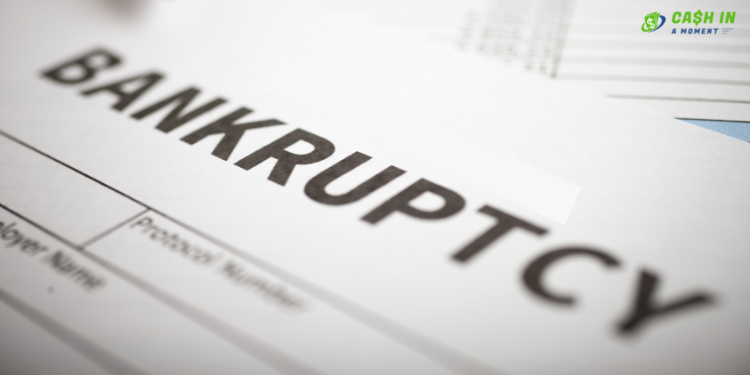Best Ways to Rebuild Credit After Bankruptcy

Many people think bankruptcy is uncommon and only happens with people with less income. Well, both are not true. Bankruptcies happen to people from all walks of life, and almost 400,000 personal bankruptcies happen every year. So, what do you do after it happens?
Is Rebuilding Credit After Bankruptcy Possible?
Yes, you can rebuild your credit score after filing bankruptcy. Even with a bankruptcy on file, you have options to improve your credit. Most people think it will take many years, but this is not true. Even though a bankruptcy will stay on your credit reports for 7-10 years, you can recover a lot of your lost credit rankings in as little as two years. Full recovery will take longer.
Always remember, it’s a good idea to consider "bad credit" options when rebuilding credit after bankruptcy. Below are some financial tips to help you along the way
How Long Can Building Credit After Bankruptcy Take?
You can expect your credit score to drop significantly after filing bankruptcy. Your scores will likely drop 100-150 points pretty fast. Rebuilding it is a much slower process. However, if you take the right steps, you can get a jump or boost in your scores in as little as two years. Most importantly, you can get your scores above 700 which will ease your ability to actually buy a car and certain other credit options.
How to Start Building Credit After Bankruptcy?
When you start rebuilding your credit, you will be able to get some lenders to offer you credit, but at a higher rate, of course. Here are a few more ideas.
Credit Cards
Credit cards are one of the easiest ways to rebuild credit but are also a primary cause of big debt and bankruptcies. There are credit card issuers who offer borrowers credit cards.
However, remember to use your new credit card wisely and only charge what you can pay back (IN FULL) each month. By paying in full and on time, you will quickly establish that you are not a bad credit risk and start gaining on your scores.
There are two kinds of credit cards—unsecured and secured
Unsecured Credit Cards
An unsecured credit card doesn’t require collateral like a security deposit. Your credit report is used by credit card providers to establish your creditworthiness for an unsecured card. If they think you can make your credit card payments on time, they may give you an unsecured card.
You probably will not be able to get an unsecured card right away. If you do, it will be at the highest rate allowed by law, often 30% or more. Do not hurry to get a card like this as the interest alone is very costly--the same as payday loans in many states.
Secured Credit Cards
A secured credit card is the best short-term way to get started and rebuild your credit.
Secured cards use a security deposit into a savings account as collateral. If you are unable to pay your credit card amount, the issuer will take your deposit to settle the balance. Your deposit is usually your credit limit. For example, if you deposit $500, you can spend up to $500 on the card.
Most secured cards refund your deposit after you make consistent, on-time monthly payments. That is the key!
Installment Loans
Traditional loans, like a mortgage or car loan, are installment loans. An installment loan has fixed payments that repay your loan over time. Your monthly payment will include the cost of interest for the loan.
Paying on time with an installment loan helps build your credit over time. It will also show lenders that you are capable of managing your personal finances every month.
Credit Builder Loans
Credit builder loans are a unique type of installment loan. They are generally short-term loans for smaller dollar amounts. You might only get one of these loans for 6-12 months, but it will help you boost your credit scores.
Tips to Get Started on Rebuilding Your Credit
- You must learn financial discipline, start by setting up a budget and review it regularly
- Keep your income steady and consider a part-time gig to add income so you can always meet your obligations as well as set aside savings.
- Make your payments a few days early or on time but NEVER late.
- Don’t overuse your credit. Credit utilization is a big part of your credit scores. This is simply the percentage of your available credit you use every month. It should be under 10%!
- As you get credit cards, etc., make those early or on-time payments no matter what. Add more credit as you can but only use small amounts of each card or line of credit—the higher your ‘available’ credit with low usage, the better. Remember that making small purchases and on-time payments is much better than big payments.
You Can Rebuild Your Credit After Bankruptcy
Having a bankruptcy on your credit report will give you a bad credit score, but you can rebuild it. Make a plan to start rebuilding your credit as soon as possible.
Seek financial assistance if you are not sure how to rebuild your scores. There are a lot of free counseling services you can use and tons of online help as well. If you have a CPA, financial advisor, or tax preparer, they may also help you.
If you find yourself in need of short-term emergency cash, consider that CashinaMoment has a large referral network of direct lenders to serve people in need of online loans or emergency loans. Open 24/7, and 365 days a year, we serve Americans coast-to-coast.
category: Financial Services
Comments are closed

